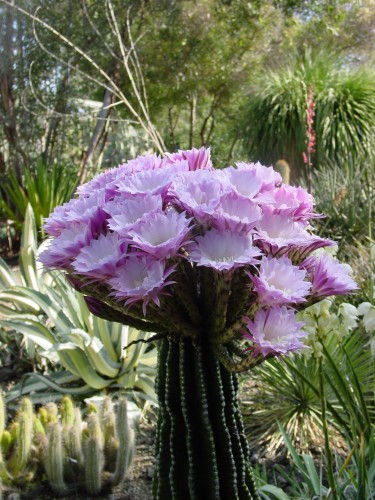
Echinopsis hybrid
After her husband, Philip, had phased out his family’s extensive walnut orchards, Mrs. Bancroft began in 1972 to plant her dry garden, containing a realm of plant life that characteristically requires limited water to thrive.
Mrs. Bancroft developed a keen eye for form and structure as an architectural student in college. Such skills served her well in the garden’s early years, as she sited important palm trees and other arboreal specimens and shrubs.
After being ushered through the garden’s folly, you encounter the intriguing rosette forms of aloes, detecting great variety and scope in plants set off by spotted patterns and menacing pink teeth. Among the strange shapes and dramatic textures are tree-like aloes emblematic of the garden’s maturity.
All sorts of blooms materialize year-round in the garden. In spring and summer yuccas produce a host of towering, cream-colored flowering stalks, while the bizarre attributes of cactus plants indigenous to America are ornamented by pretty flowers followed by plentiful fruits. Aloes are garden curator Brian Kemble’s area of expertise. Among new hybrids developed by Kemble are plants producing flowers over a long period; with clouds of orange blooms creating a brilliant spectacle.
Bristly rotound cacti, yuccas with fibrous sharp-tipped, lance-like leaves, spiny agaves and escheverias with fleshy foliage assume their positions in mounded beds like a sculptural installation composed of living plant material.
Some years ago, I walked the paths guided by Mrs. Bancroft, and found that the assertive plant shapes enhance the garden’s organic layout. Mrs. Bancroft pointed out an area of slightly higher ground with an enticing planting of cacti, where she believed it to be a little warmer than the rest of the garden. Some cactus plants exhibit vivid red spines, while Eucalypts make alluring compatriots for the garden’s vast range of succulents.
Dodging raindrops, we entered a tunnel-like cover sheltering countless varieties of echeverias and gasterias: The wide cover built so that people could walk through and enjoy the plants in winter. I gazed down upon a topography composed of hairy-textured to felted to smooth and sleek leaves revealing a rosy pink glow. Huddled en masse, the gleaming flora boasted a scintillating palette of glaucous pale gray to olive green and blushed mauve, with red and violet tinges.
Mrs. Bancroft’s design artistry and gardening prowess as creator of this iconic landscape inspired the founding of The Garden Conservancy in 1989. Having set its sights on preserving our country’s horticultural legacy, the Conservancy championed Mrs.Bancroft’s 3-acre garden, selecting it as the first to be listed on the organization’s register.
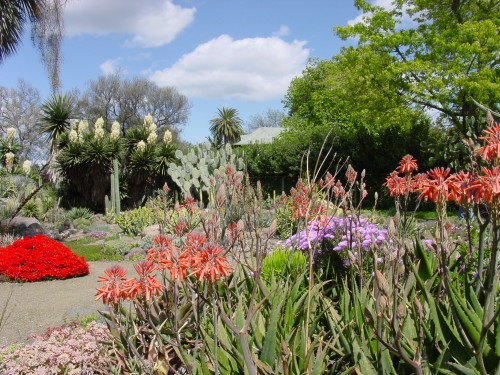
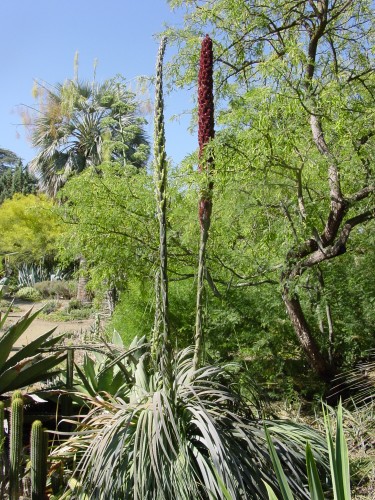
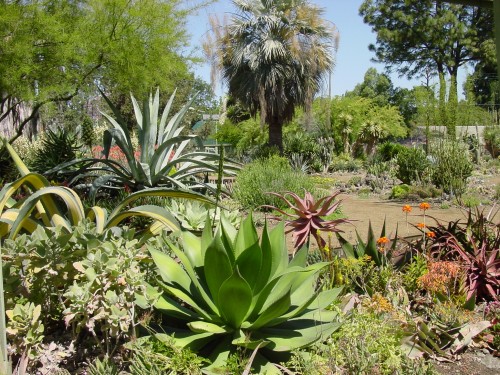
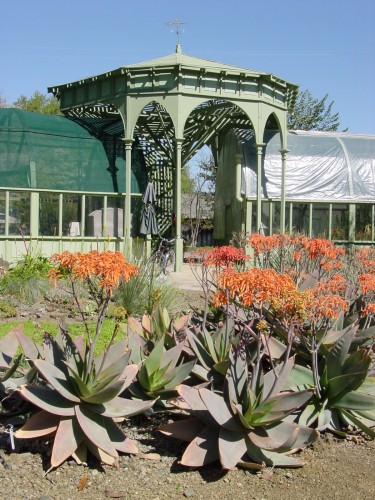
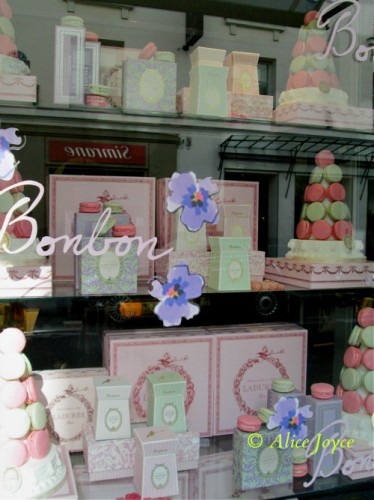
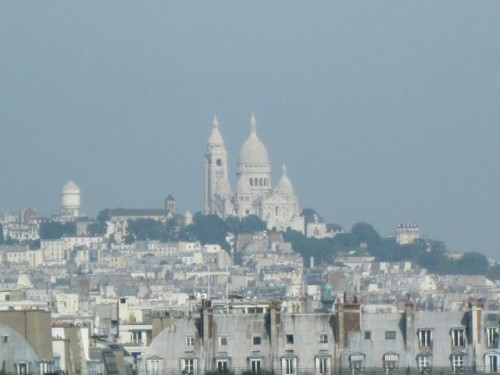
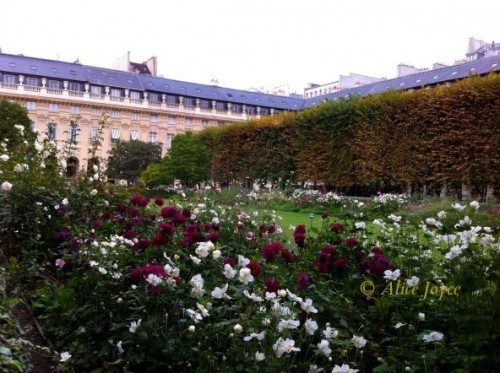
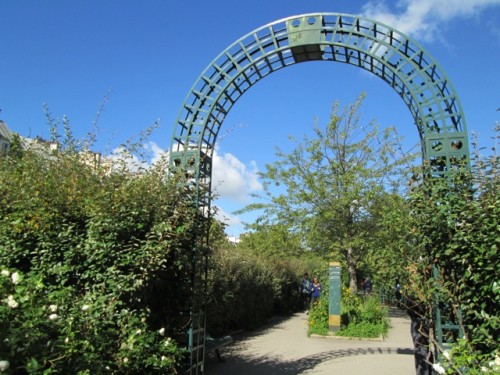
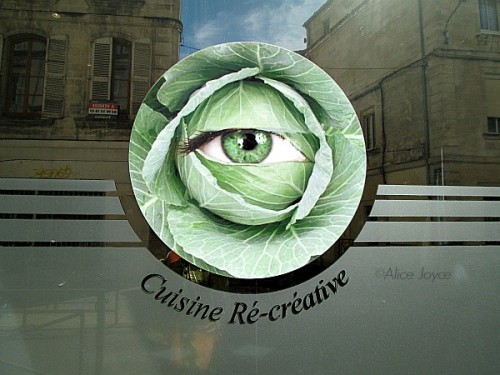
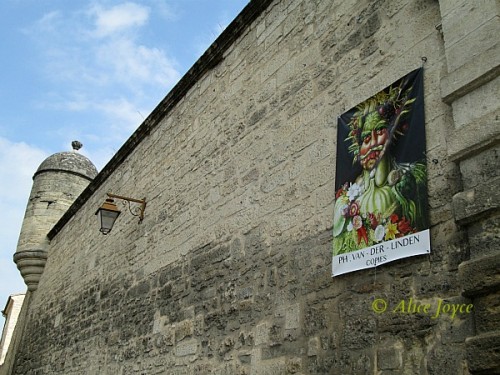
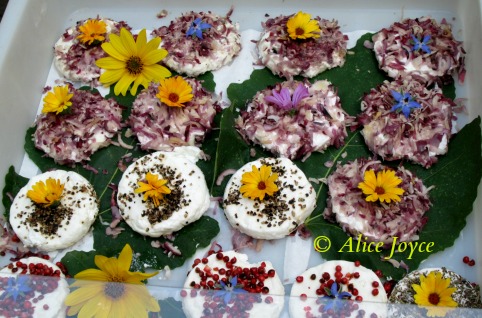
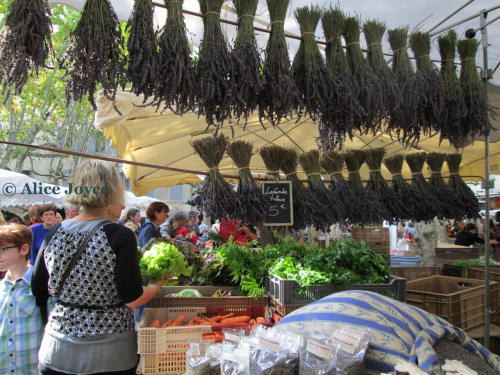


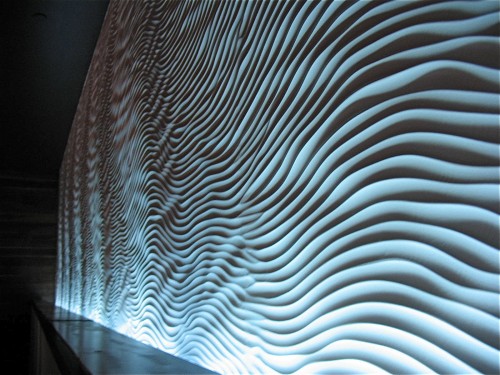
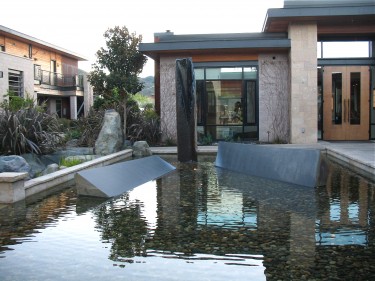
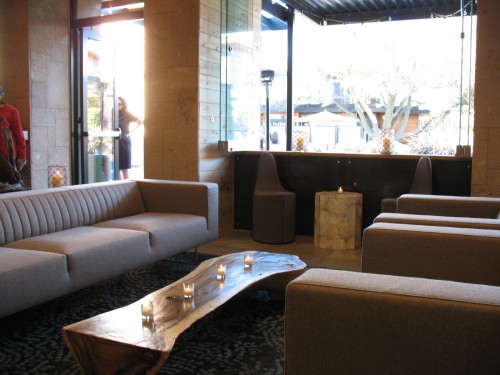

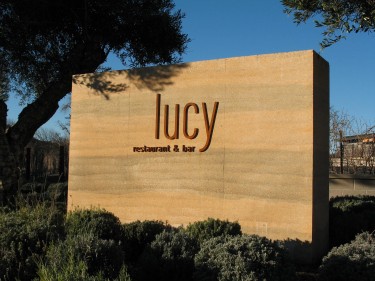
Comments